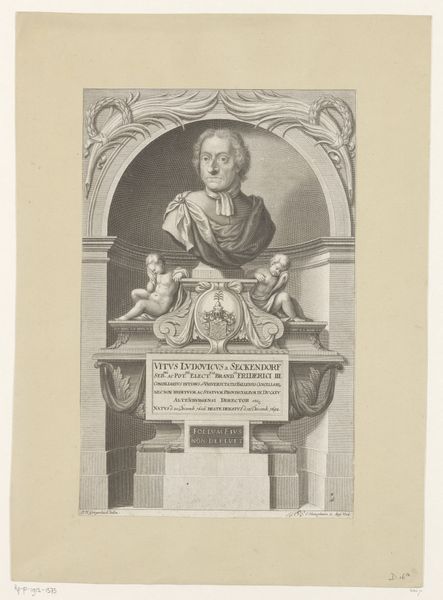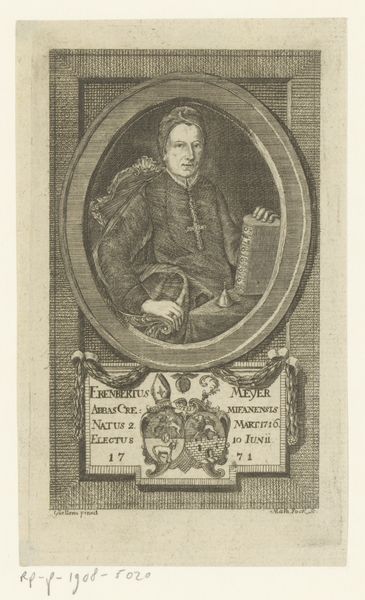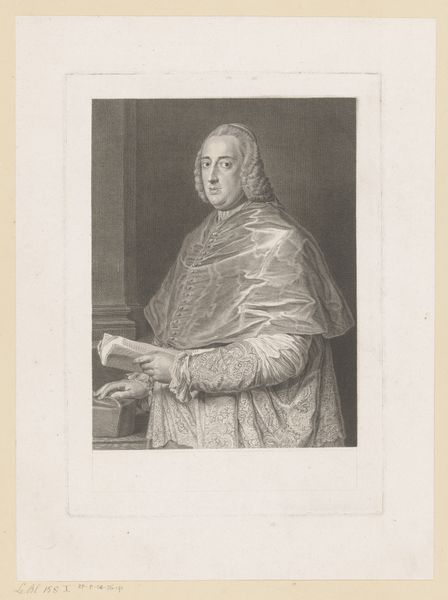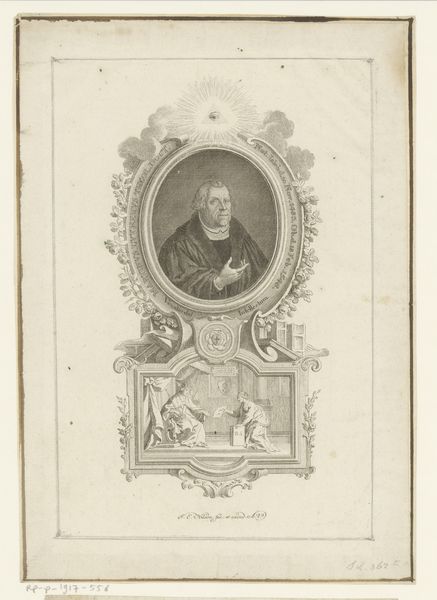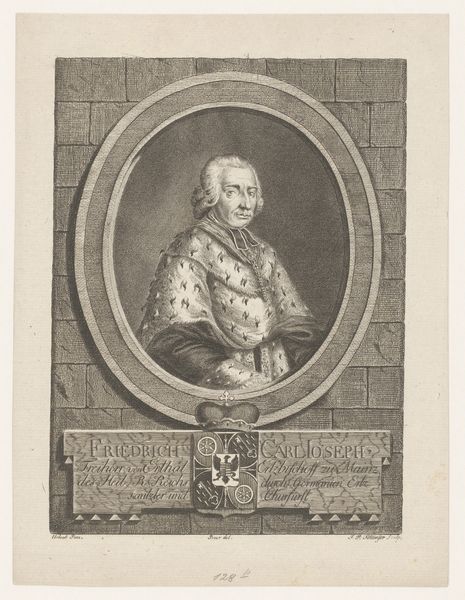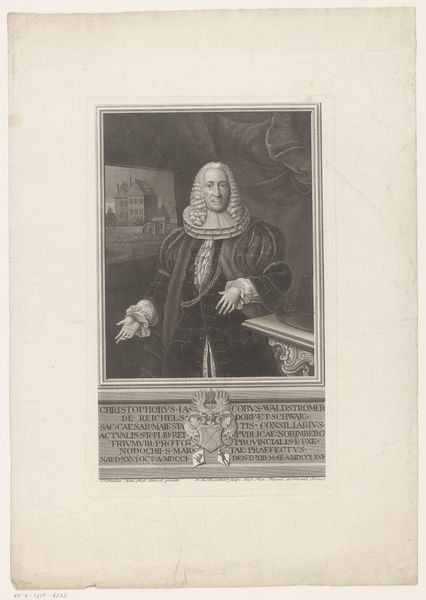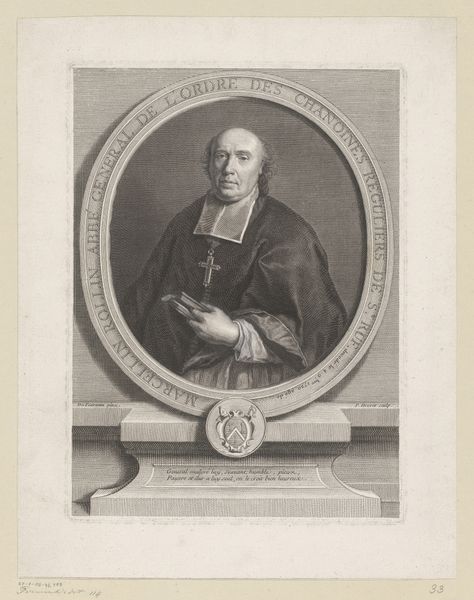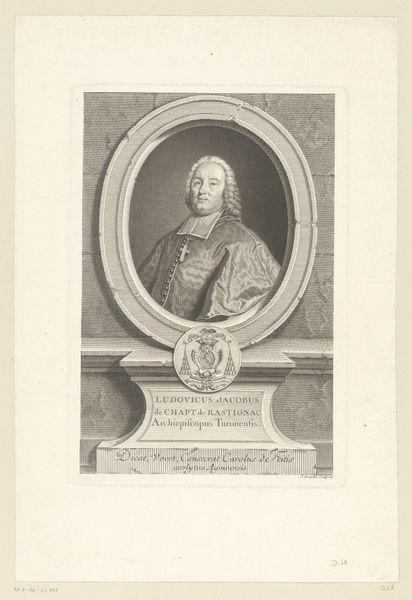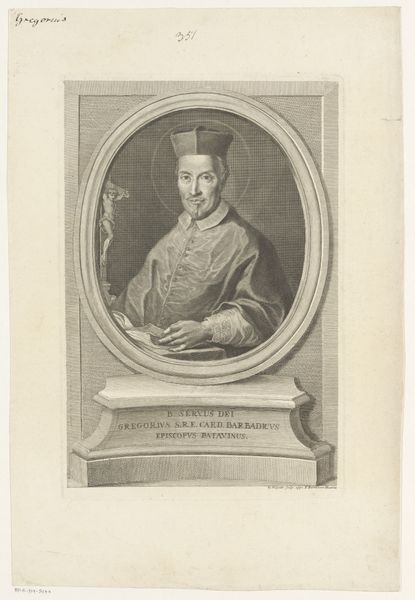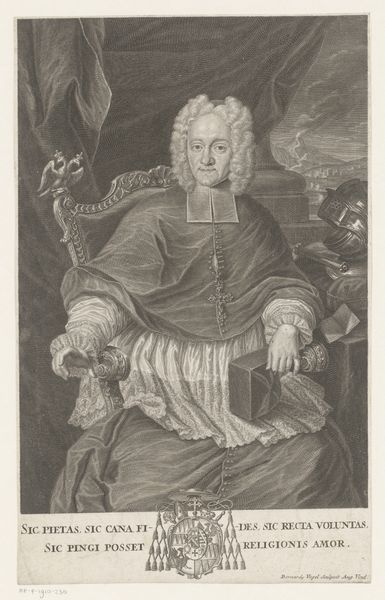
print, engraving
#
portrait
#
baroque
# print
#
history-painting
#
academic-art
#
engraving
Dimensions: height 539 mm, width 392 mm
Copyright: Rijks Museum: Open Domain
Curator: This is a portrait of Pierre Mayeur, Abbot of Clairvaux, created between 1740 and 1745 by Nicolas de Larmessin III. It's an engraving, a print intended for wider circulation. Editor: It has a strange passivity to it, wouldn't you say? The composition seems rather staged and inert. All those symbolic objects down below on the plinth appear so very formal. Curator: Well, consider the social context. Larmessin was the official engraver of the King, and prints like these were crucial in disseminating images of important figures throughout the French court and beyond. The Baroque style, favored at the time, emphasized grandeur and the status of the subject. Editor: I'm more drawn to the labor involved in this, honestly. Think about the painstaking process of creating the matrix for printing, the tools used, the engraver's hand guiding each line, shadow, and texture. The repetition inherent in printmaking interests me too, making an image available beyond a singular elite owner. Curator: Precisely. Its accessibility is key. This wasn’t just about representing Mayeur but also about affirming the power of the Church, presenting a carefully curated image of piety and authority to the masses. The cross prominently displayed, the book in his hand – it’s all very deliberate. Editor: Yes, but note the material wealth represented as well: the sheen of the robe, the lace on the sleeves, the velvet backdrop. The church may project an image of spiritual concern, but its earthly power is reflected by such displays of material wealth through the artwork. Curator: Absolutely, it speaks to the complex relationship between spiritual authority and material power in the 18th century. Engravings allowed these ideas, this carefully crafted image, to permeate society, solidifying social hierarchies. Editor: Considering the material reality of its making and its purpose does highlight how much thought and work goes into solidifying status. These artifacts solidify positions and validate them historically. Curator: It’s a powerful testament to the role of art in shaping and reinforcing societal structures and individual positions. Editor: Exactly, and examining the print as both image and object adds an insightful layer to its interpretation, wouldn’t you agree?
Comments
No comments
Be the first to comment and join the conversation on the ultimate creative platform.
